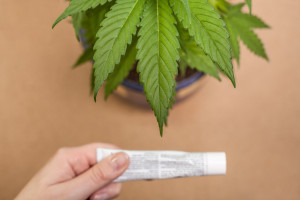While smoking or consuming cannabis is now an acceptable form of medical treatment, topical infusions are also gaining in popularity. However, ancient cultures documented the benefits of using cannabis topically in many different preparations.
The Resurgence of Topical Cannabis
Besides medical cannabis dispensaries in Portland, many medical marijuana dispensaries, offer topical cannabis. The plant serves as the active ingredient in creams, liniments, lotions and ointments. However, though seemingly a new and innovative idea, the Chinese, Greeks and Romans were aware of the benefits of topical cannabis thousands of years ago.
Topical Cannabis History
From approximately 2700 B.C., Chinese medical practitioners ground cannabis roots into a paste to alleviate pain from injuries or surgical procedures. Topical preparations were also used to stop bleeding. Roman historian Pliny the Elder documented in 79 A.D. how boiled cannabis root was used as a topical analgesic. He also explained how the root itself was applied to skin burns to minimize discomfort and reduce blistering. The Roman doctor Dioscorides and the Greek physician Oribasius made similar claims. European physicians during the 16th century also used topical cannabis preparations.
Types of Topical Preparations
Creams or lotions are made using a combination of cannabis mixed with bee’s wax, coconut oil, essential oils and shea butter that may be heated then cooled. The amount and type of additives used depends on whether someone is creating a balm, cream, lotion or ointment. Liniments are created by putting an ample amount of cannabis in a jar, filling the container with alcohol and allowing the mixture ample time to infuse. Modern topical formulas utilize cannabis strains featuring specific cannabinoid and terpene properties.
How Infused Topical Treatments Work
Cannabis topical preparations are absorbed through the skin where they attach to CB2 receptors. These receptors are particularly prevalent on the surface of white blood cells, which are instrumental in initiating inflammatory responses. The formulas are often used to diminish localized inflammation, pain and stiffness from minor injuries or arthritic conditions. However, some users claim that the preparations are also beneficial for relieving the itching, reddening and swelling associated with dermatitis and eczema. Users also share that the products are helpful in alleviating abdominal cramping and headaches.


